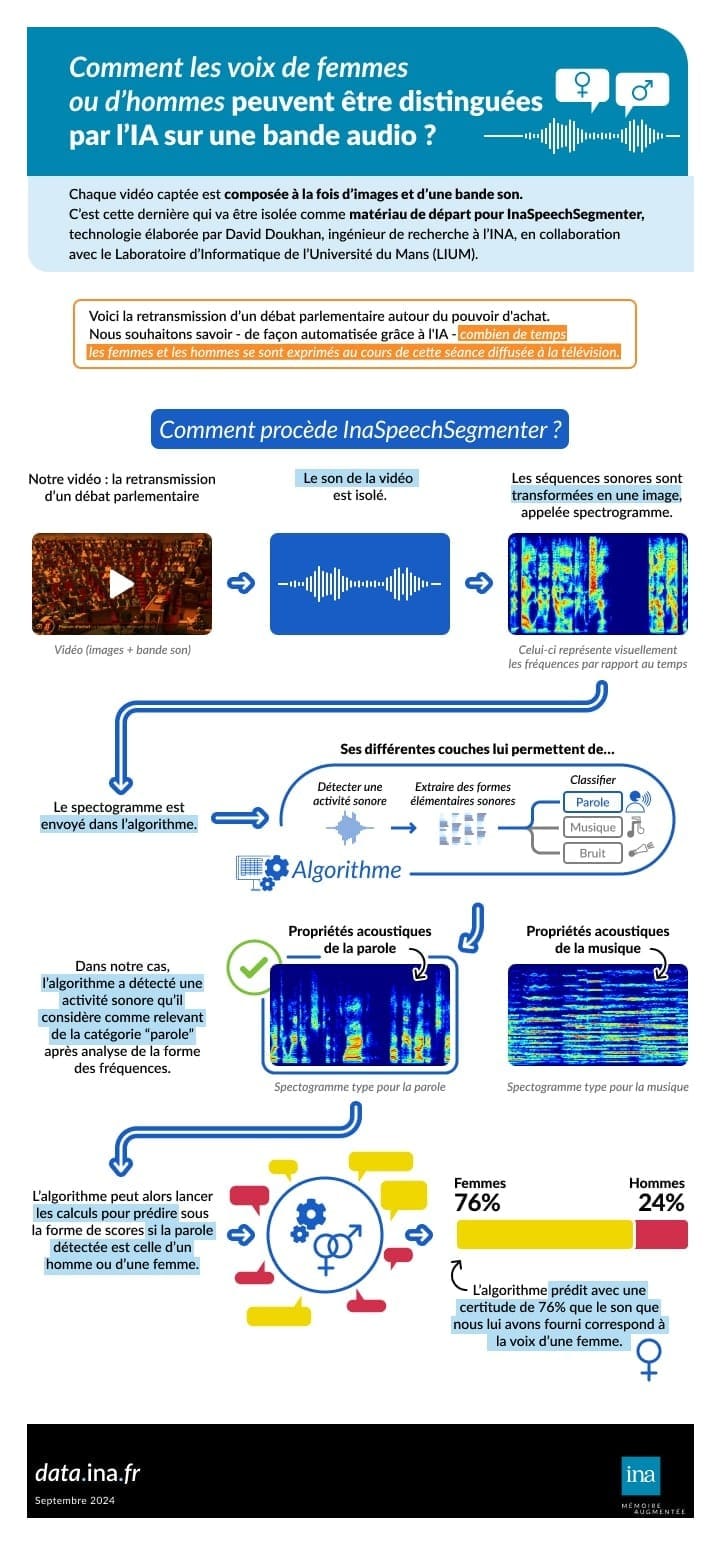INA DATA, an Ethical Model for Accessing Audiovisual Archives

The launch of INA DATA by the French National Audiovisual Institute (INA) marks a major advancement in digital innovation and the management of audiovisual archives. This platform allows extensive access to decades of French history through audiovisual content, leveraging cutting-edge technologies such as artificial intelligence (AI) to facilitate the consultation of archives.
However, beyond technological innovation, INA DATA stands out for its commitment to transparent documentation of processes, a fundamental aspect of data ethics. This transparency is essential to ensure that innovation remains responsible and equitable. In this article, we will explore how INA DATA combines innovation and ethics through rigorous methodology and AI practices.
📊 INA DATA: A Platform of Technological Innovation
INA DATA uses innovative technologies to process thousands of hours of audiovisual content, making cultural heritage accessible in unprecedented ways. Through artificial intelligence and advanced algorithms, the platform offers automatic video indexing, dialogue transcription, and keyword search tools to streamline content exploration.
However, with this innovation come inevitable ethical questions: how are these algorithms developed, and what potential biases might they contain when analyzing data? To address these concerns, INA DATA adopts a transparency-first approach to documenting its processes, a crucial element in building user trust in this new technology.
📝 Transparency and Ethics: A Rigorous Methodology
One of INA DATA's core principles is its commitment to transparently documenting the processes used to analyze and process audiovisual archives. This level of transparency is critical to ensuring that innovation adheres to strict ethical standards, particularly regarding data protection and the avoidance of algorithmic biases.
On its website, INA has published a comprehensive methodology that outlines the various stages of data processing, from video collection to AI-based analysis. This document provides detailed insights into the technologies used and the quality control measures in place to ensure that each process is fair and accurate.
- Process documentation: Every step of data processing is clearly documented and made publicly available, so that researchers, journalists, and other users understand exactly how videos are analyzed and classified. This commitment to documentation ensures that the platform operates in a transparent framework, allowing users to grasp the decisions made by the algorithms.
🔍 Artificial Intelligence: A Powerful, Yet Regulated Tool
One of the most striking innovations of INA DATA is the use of artificial intelligence to facilitate the processing of archives. Through facial recognition, automatic transcription, and text analysis algorithms, the platform enables faster and more accurate exploration of content.

However, AI comes with inherent risks, including algorithmic biases. For instance, facial recognition systems can sometimes be less accurate for certain populations or may struggle to properly process older images. To mitigate these challenges, INA DATA ensures that its algorithms undergo regular auditing and testing to guarantee their fairness.
The platform also provides detailed information on the AI treatments it uses. This document outlines the various machine learning methods employed and explains how INA works to prevent biases in facial recognition and content analysis.
- Concrete example: The facial recognition feature on INA DATA is governed by strict protocols to avoid potential discrimination. The AI models are trained on diversified data sets to minimize racial and gender biases, an essential practice to ensure that access to archives does not perpetuate historical errors or stereotypes.
🎛️ Ethical Innovation and Fair Access to Information
While INA DATA represents undeniable technological progress, innovation does not stop at the technical aspect. It also extends to fair access to information and the democratization of France’s audiovisual heritage.
INA has made efforts to ensure that INA DATA is accessible to diverse audiences, including researchers, educators, and journalists, as well as the general public through a simple interface and intuitive search tools. However, this raises questions about digital inequalities: how can we ensure that innovation does not exacerbate the digital divide, leaving behind less connected or less tech-savvy groups?
- Accessibility: INA DATA could further enhance its digital education efforts by offering training or tutorials to help novice users navigate the platform. This would help ensure that innovation benefits the widest possible audience, without creating technological barriers.
💡 Documentation: A Commitment to Data Ethics and Transparency
A fundamental aspect of INA DATA’s ethical approach is the comprehensive and public documentation of its processes. By making available detailed documents on the AI treatments and methodology used, INA ensures that users understand how content is selected, analyzed, and made available online.
This commitment to transparency not only guarantees the platform’s accountability, but also fosters trust among its users. By knowing that technological decisions are documented and accessible, users can be confident that innovation is controlled, equitable, and aligned with data ethics principles.
🌐 Responsible Innovation, A Model to Follow
With INA DATA, the French National Audiovisual Institute demonstrates that it is possible to combine technological innovation and data ethics in the management of audiovisual archives. By transparently documenting its processes and regulating the use of artificial intelligence, INA sets an example of responsible innovation, where transparency and data protection are central to the approach.
For users of the platform—whether researchers, journalists, or the general public—this public documentation ensures an informed access to information and confirms that the AI used adheres to high ethical standards. This marks a turning point in the management of audiovisual data in France and could inspire similar initiatives internationally.
